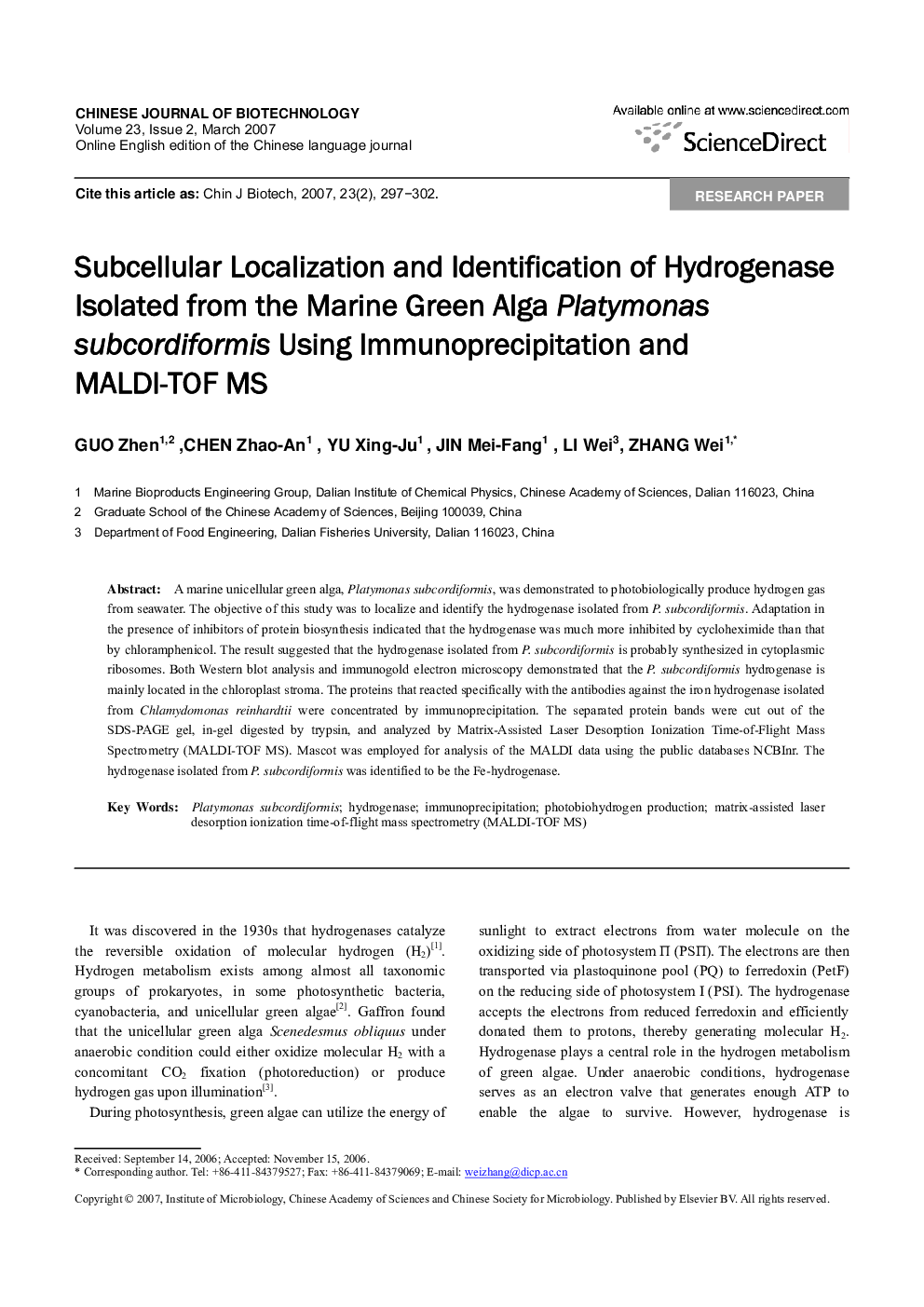| Article ID | Journal | Published Year | Pages | File Type |
|---|---|---|---|---|
| 2078988 | Chinese Journal of Biotechnology | 2007 | 6 Pages |
Abstract
A marine unicellular green alga, Platymonas subcordiformis, was demonstrated to photobiologically produce hydrogen gas from seawater. The objective of this study was to localize and identify the hydrogenase isolated from P. subcordiformis. Adaptation in the presence of inhibitors of protein biosynthesis indicated that the hydrogenase was much more inhibited by cycloheximide than that by chloramphenicol. The result suggested that the hydrogenase isolated from P. subcordiformis is probably synthesized in cytoplasmic ribosomes. Both Western blot analysis and immunogold electron microscopy demonstrated that the P. subcordiformis hydrogenase is mainly located in the chloroplast stroma. The proteins that reacted specifically with the antibodies against the iron hydrogenase isolated from Chlamydomonas reinhardtii were concentrated by immunoprecipitation. The separated protein bands were cut out of the SDS-PAGE gel, in-gel digested by trypsin, and analyzed by Matrix-Assisted Laser Desorption Ionization Time-of-Flight Mass Spectrometry (MALDI-TOF MS). Mascot was employed for analysis of the MALDI data using the public databases NCBInr. The hydrogenase isolated from P. subcordiformis was identified to be the Fe-hydrogenase.
Keywords
Related Topics
Life Sciences
Biochemistry, Genetics and Molecular Biology
Biotechnology
Authors
GUO Zhen, CHEN Zhao-An, YU Xing-Ju, JIN Mei-Fang, LI Wei, ZHANG Wei,
